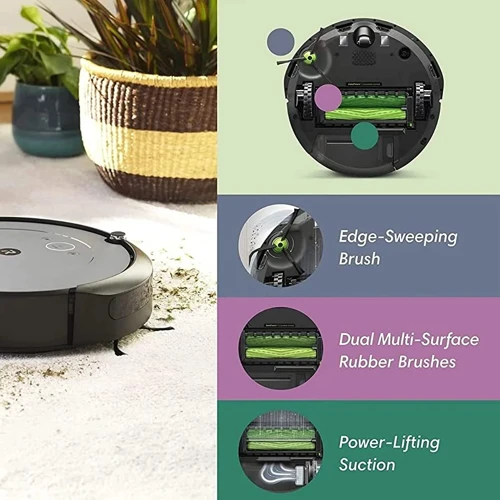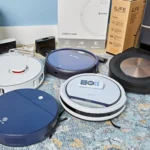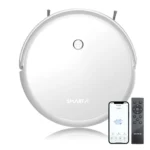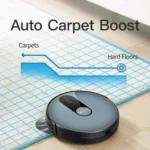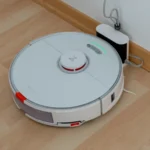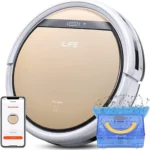Have you ever dreamed of a vacuum cleaner that cleans your floor without you having to lift a finger? Well, with Wi-Fi connected smart vacuums, this dream has become a reality. These devices are equipped with advanced technology that allows you to control them remotely, using your smartphone or voice assistants like Alexa or Google Assistant. But is it really worth investing in one of these smart vacuums, or are they just another gimmick on the market? In this article, we will explore the pros and cons of Wi-Fi connected smart vacuum cleaners and help you make an informed decision about whether they are right for you.
Advantages of Wi-Fi Connected Smart Vacuum Cleaners
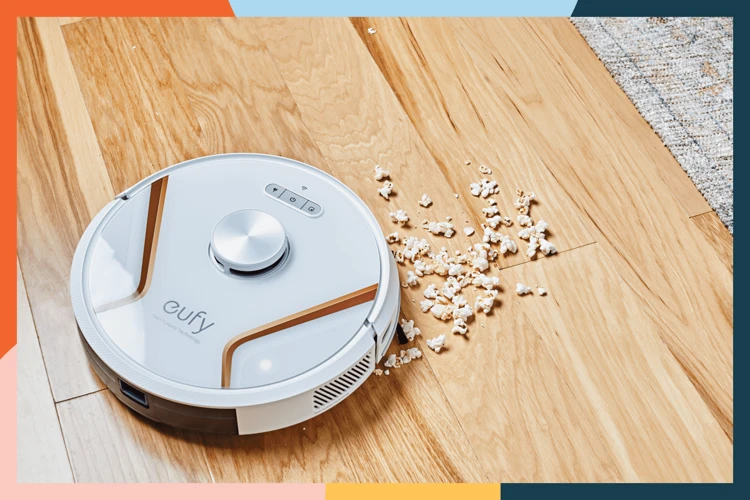
With the rise of technology, Wi-Fi connected smart vacuum cleaners have become increasingly popular among consumers. These high-tech devices offer a range of benefits that traditional vacuum cleaners simply cannot compete with. From convenient app control to better functionality with voice assistants, the advantages of these smart devices are hard to ignore. However, before investing in one, it’s important to understand the pros and cons of Wi-Fi connected smart vacuum cleaners, as well as the factors to consider when choosing the right one for your home. Let’s take a closer look at why these devices are causing such a buzz in the market. To learn more about the top Wi-Fi connected smart vacuum cleaners available, check out our list of the best smart vacuums with Wi-Fi.
1. Convenient control with smartphone apps
With the rise of technology, smart vacuum cleaners have become a popular addition to many households. One of the biggest advantages of Wi-Fi connected smart vacuum cleaners is the convenience they provide with smartphone apps. These apps allow you to control your vacuum cleaner from anywhere, anytime with just a few clicks on your mobile device. Some popular smart vacuum cleaners even have their own dedicated apps that allow you to schedule cleanings, monitor battery life, and receive alerts when it’s time to empty the dustbin or replace the filter.
Here are some of the benefits of controlling your smart vacuum cleaner with a smartphone app:
- You can adjust the cleaning settings, such as suction power and cleaning schedule, even when you’re not at home. This allows you to ensure your floors are always clean and ready for your arrival.
- You can set no-go zones in your home to prevent the vacuum cleaner from entering certain areas. This is especially useful if you have a pet or if there are areas in your home with delicate items.
- You can track the cleaning progress and receive notifications when the cleaning is complete, which saves you time and effort.
- You can easily troubleshoot any issues with the vacuum cleaner through the app, without having to contact customer support.
However, it’s worth noting that some users may find the app-controlled feature of their Wi-Fi connected smart vacuum cleaner to be confusing or overwhelming. As with any new technology, there can be a learning curve to understanding how to use the app, which may deter some users. Additionally, if you have poor internet connectivity or if the app experiences technical glitches, it may impact the functionality of your smart vacuum cleaner.
If you’re someone who values the convenience of controlling your vacuum cleaner with a mobile device, a Wi-Fi connected smart vacuum cleaner may be worth considering. For more information about the top smart vacuums on the market, check out our top 10 smart vacuum cleaners with Wi-Fi guide.
2. Remote access from anywhere, anytime
One of the key advantages of having a Wi-Fi connected smart vacuum cleaner is the ability to remotely access it from anywhere, at any time. This means that even when you’re out of the house or away on vacation, you can still keep an eye on your home and ensure that your floors are being kept clean with just a few clicks on your smartphone.
Here are some benefits of remote access:
- Convenience: With remote access, you don’t need to physically be at home to start or stop your smart vacuum. This means you can set it to clean your floors at any time and from anyplace, as long as you have a stable Internet connection.
- Flexible scheduling: Remote access allows you to schedule cleaning cycles according to your daily routine, which is perfect for those who lead a busy lifestyle. For instance, if you’re hosting a party and forgot to clean your floors beforehand, you can start your smart vacuum using your smartphone and have your floors cleaned in no time.
- Real-time alerts: Some smart vacuum cleaners come with real-time notification features that allow you to receive alerts on your smartphone when the cleaning cycle is complete or if the device encounters any issues during operation.
However, while having remote access is undoubtedly convenient, it’s worth noting that it comes with some caveats. For instance, if the internet connection is unstable, the remote access feature may not function properly, leading to operational glitches in the smart vacuum. Also, remote access may pose a security risk as the smart vacuum cleaner may be susceptible to hacking or malware attacks.
If you’re interested in learning more about the pros and cons of Wi-Fi connected smart vacuum cleaners, check out our comparison article of iRobot Roomba vs. Shark IQ vs. Eufy Robovac.
3. Better functionality and efficiency with voice assistants
A Wi-Fi connected smart vacuum cleaner offers more than just convenience and ease of use through smartphone apps. This type of vacuum cleaner can also provide better functionality and efficiency with voice assistants, such as Amazon Alexa or Google Assistant.
Voice assistants can make cleaning effortless
The integration of voice assistants with smart vacuum cleaners allows users to control their cleaning machines hands-free. With your commands, the vacuum cleaner will start cleaning and navigate around obstacles without any human intervention. You can also schedule cleaning sessions or ask for status updates with simple voice commands, eliminating the need to manually operate the machine using button controls or a smartphone app.
Choose a smart vacuum with voice integration wisely
Before purchasing a Wi-Fi connected smart vacuum cleaner with voice integration, it is crucial to research and choose a model that has a reliable and efficient voice assistant configuration. The table below highlights the available voice assistants in popular Wi-Fi smart vacuum cleaners on the market.
| Smart Vacuum Cleaner | Voice Assistant |
|---|---|
| iRobot Roomba i7 | Amazon Alexa, Google Assistant |
| Shark IQ Robot | Amazon Alexa, Google Assistant |
| Eufy RoboVac 11S MAX | Amazon Alexa, Google Assistant |
It is recommended to choose a model that supports your preferred voice assistant to ensure seamless integration and control.
Voice integration in smart vacuum cleaners greatly enhances the user experience and simplifies the cleaning process. However, it is essential to wisely choose a model that has reliable voice assistant configuration to enjoy the convenience of hands-free cleaning.
If you want to know more about popular Wi-Fi smart vacuum cleaners, check out our comparison article. If you want to learn more about Wi-Fi smart vacuum cleaners and their impact, check out our benefits of Wi-Fi smart vacuum cleaners article.
Disadvantages of Wi-Fi Connected Smart Vacuum Cleaners
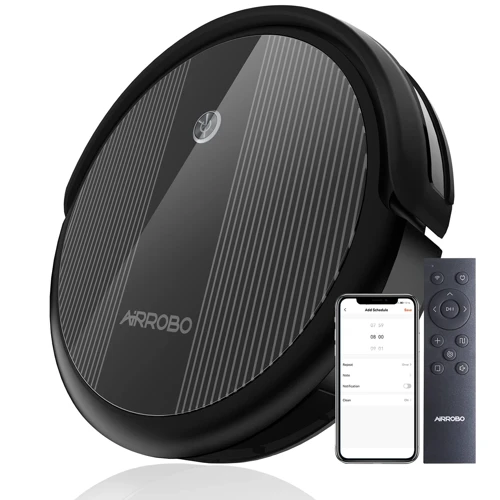
While Wi-Fi connected smart vacuum cleaners offer a range of benefits, they do come with a few disadvantages. It’s important to weigh the pros and cons before making a decision about whether a smart vacuum cleaner is right for your home. Some users experience technical glitches and connectivity issues, while others may be concerned about privacy and security risks. Additionally, the initial cost of purchasing a Wi-Fi connected smart vacuum cleaner may be higher than a traditional vacuum. Let’s take a closer look at these potential drawbacks.
1. High initial cost
While Wi-Fi connected smart vacuum cleaners offer advanced features and convenience, one major disadvantage is the high initial cost. It is important to consider whether the benefits of a smart vacuum cleaner outweigh the price tag. Let’s take a closer look at the cost implications of Wi-Fi connected smart vacuums:
| Product | Price (USD) |
| Roomba i3+ | $599 |
| Shark IQ Robot Self-Empty XL | $599 |
| Ecovacs Deebot Ozmo T8 AIVI | $799 |
| Samsung POWERbot R7070 | $699 |
As seen in the table, Wi-Fi connected smart vacuums can range from $599 to $799 depending on the features and capabilities. While the technology and convenience can be enticing, it is important to weigh the cost against traditional vacuum cleaners.
Is it worth the investment? While the initial cost may be high, it can save time and effort in the long run. With the option to control the vacuum from a smartphone app or voice assistant, one can clean the house even when they’re not at home. However, it is important to consider the ongoing costs of maintenance and repairs.
If you’re considering purchasing a Wi-Fi connected smart vacuum cleaner, it’s important to do your research and compare different models. Take into account factors such as compatibility with smart home systems, battery life, dustbin capacity, and filtration systems before making a decision.
Related: Some customers have reported Wi-Fi connectivity issues and glitches with their smart vacuum cleaners, which can add to the overall cost of ownership. However, many users believe that the convenience of app control and mapping capabilities are worth the investment. Additionally, many smart vacuum cleaners offer smart home integration which can further simplify your cleaning routine.
2. Technical glitches and connectivity issues
When it comes to Wi-Fi connected smart vacuum cleaners, one of the potential disadvantages to consider is the possibility of technical glitches and connectivity issues. While these machines are designed to make cleaning your home more convenient, they do rely on technology and connectivity, which can sometimes lead to frustration and setbacks.
To help you get a better idea of what to expect, here are some specific examples of the types of technical issues and connectivity problems that may arise:
| Problem | Description |
|---|---|
| Connection drops | Sometimes, the vacuum cleaner may lose its connection to your Wi-Fi network, which can prevent you from being able to control it remotely or access its features. |
| App malfunctions | If the smartphone app that you use to control the vacuum cleaner has bugs or glitches, it may not work properly and could prevent you from being able to use all of its features. |
| Software updates | Manufacturers may release updates for your vacuum cleaner’s firmware and software, which can sometimes create compatibility issues or introduce new bugs. |
| Battery problems | If the battery in your vacuum cleaner isn’t working correctly, it may not be able to establish a stable connection to your Wi-Fi network or may not run for as long as you need it to. |
| Sensor malfunctions | Smart vacuums rely on sensors to navigate your home and avoid obstacles, but if these sensors aren’t working properly, the vacuum may get stuck or have difficulty completing its cleaning cycles. |
While these issues can be frustrating, it’s important to keep in mind that they are not inherent to all Wi-Fi connected smart vacuum cleaners. Researching different options and reading reviews from other users can help you find a model that is reliable and has fewer technical glitches and connectivity issues. Additionally, knowing how to troubleshoot common problems can help you overcome any issues that do arise so that you can continue to enjoy the benefits of your smart vacuum cleaner.
3. Privacy and security risks
When it comes to Wi-Fi connected smart vacuum cleaners, one of the major concerns is related to privacy and security risks. While these devices offer remarkable convenience, they also collect a significant amount of data about the user’s home and cleaning routine.
As these devices are connected to the internet, there is always a chance of hacking or cyber attacks, which can lead to unauthorized access to personal data. There is also a possibility that the collected data might be shared with third-party organizations, without the user’s explicit consent.
Let’s take a closer look at some of the potential privacy and security risks that users should be aware of before investing in a Wi-Fi connected smart vacuum cleaner:
| Privacy and Security Risks | Explanation |
|---|---|
| Data Collection | Smart vacuum cleaners collect data such as the layout of the house, cleaning schedules, and usage patterns, which can be used to infer user behavior and lifestyle. This data could be vulnerable to exploitation by malicious actors. |
| Cyber Attacks | As these devices connect to the internet, they can be targeted by hackers for potential cyber attacks, which could lead to unauthorized access to personal data or cause physical harm. |
| Data Sharing | Manufacturers might collect and share users’ personal data with third-party organizations without their consent, which could compromise users’ privacy and security. |
To mitigate these risks, it is essential to choose a Wi-Fi connected smart vacuum cleaner from a reputable brand that prioritizes user privacy and security. Additionally, users should be cautious before granting access to their personal data and ensure that their device’s security features – such as password protection and firmware updates – are up to date.
By being informed about the privacy and security risks associated with Wi-Fi connected smart vacuum cleaners, users can make an informed decision and enjoy the convenience of these devices without compromising their privacy or security.
Factors to Consider When Choosing a Wi-Fi Connected Smart Vacuum Cleaner
When it comes to choosing a Wi-Fi connected smart vacuum cleaner, there are various factors you need to consider before making a purchase. These factors include the compatibility with home automation systems, the battery life and charging time, the dustbin capacity and filtration system, and the brand reputation and customer service. Each of these factors can have a significant impact on the performance and longevity of your smart vacuum cleaner. It’s important to take your time and carefully evaluate each option to ensure you make the best choice. Let’s explore each factor in more detail.
1. Compatibility with home automation systems
When considering a Wi-Fi connected smart vacuum cleaner, it is important to factor in its compatibility with your home automation systems. This can add another layer of convenience to your cleaning routine, allowing you to integrate your vacuuming activity with other household tasks seamlessly.
Table 1: Comparison of Wi-Fi Connected Smart Vacuum Cleaners’ Compatibility with Home Automation Systems
| Brand | Compatible Home Automation Systems | Additional Features |
|---|---|---|
| Roomba iSeries | Amazon Alexa, Google Assistant, IFTTT | Customizable cleaning schedules and zones |
| Shark IQ Robot | Amazon Alexa, Google Assistant, IFTTT | Multi-surface cleaning and self-cleaning brushroll |
| Eufy Robovac | Amazon Alexa, Google Assistant | BoostIQ technology for automatic suction increase on carpets |
| Neato D Series | Amazon Alexa, Google Assistant, IFTTT | LaserSmart mapping technology for efficient cleaning |
As shown in Table 1, different brands offer varying degrees of compatibility with home automation systems. The Roomba iSeries, for example, offers the most comprehensive integration options, allowing you to create customized cleaning schedules and zones for your vacuum cleaner using Amazon Alexa, Google Assistant, or IFTTT. The Shark IQ Robot and Neato D Series also offer similar compatibility options, while the Eufy Robovac limits its integration to Amazon Alexa and Google Assistant.
In addition to the level of compatibility, smart vacuum cleaners also come with different additional features specific to their brand. The Shark IQ Robot, for instance, comes with a self-cleaning brushroll and multi-surface cleaning capabilities. The Eufy Robovac, on the other hand, uses BoostIQ technology to automatically adjust its suction for increased cleaning efficiency on carpets. Considering these additional features alongside compatibility can help you choose the best smart vacuum cleaner that fits your household needs.
When evaluating a Wi-Fi connected smart vacuum cleaner, checking its compatibility with your home automation systems and considering its additional features can help you make an informed decision.
2. Battery life and charging time
One important factor to consider when choosing a Wi-Fi connected smart vacuum cleaner is its battery life and charging time. After all, what good is a smart vacuum cleaner that spends all its time recharging instead of cleaning?
Most Wi-Fi smart vacuum cleaners come with rechargeable batteries. The battery life of these devices can range anywhere from 30 minutes to 2 hours, depending on the model and the type of flooring it’s cleaning. Some models even have removable batteries, allowing you to swap in a fresh one if the original battery dies.
Charging time is also important to consider. How quickly can the vacuum cleaner be charged when the battery is low? Typically, most smart vacuum cleaners take anywhere from 2 to 4 hours to fully charge. However, there are some models that have fast-charging capabilities, and if you’re in a hurry, you may want to consider one of these.
It’s important to note that battery life and charging time may vary based on different conditions such as the type of flooring, the age of the battery and frequency of usage.
Below is a table comparing the battery life and charging time of popular Wi-Fi connected smart vacuum cleaners.
| Vacuum Cleaner Model | Battery Life | Charging Time |
|---|---|---|
| Roomba i7+ | Up to 75 minutes | 3 hours |
| Eufy RoboVac 11S Max | Up to 100 minutes | 4-5 hours |
| Dyson 360 Eye | Up to 75 minutes | 2.5 hours |
| Shark IQ | Up to 90 minutes | 3-4 hours |
| iLife V3s Pro | Up to 100 minutes | 2-3 hours |
When choosing a smart vacuum cleaner, be sure to consider the battery life and charging time to ensure that it can clean your home efficiently without needing constant recharging.
3. Dustbin capacity and filtration system
When choosing a Wi-Fi connected smart vacuum cleaner, it’s important to consider the dustbin capacity and filtration system. These features are crucial for the device’s efficiency in cleaning and ensuring clean air quality in your home.
Dustbin Capacity: The dustbin is the container that holds the dirt and debris collected by the vacuum cleaner. A larger dustbin capacity means less frequent emptying, which can be a great convenience. However, a larger dustbin can also make the device heavier and bulkier, which can be an issue if you have limited storage space or need to move the device up and down stairs. On the other hand, a smaller dustbin may require more frequent emptying, but can make the device more lightweight and manageable.
Filtration System: The filtration system is responsible for capturing dust and particles, and preventing them from escaping back into the air. When looking for a smart vacuum cleaner, it’s important to choose one that has a high-efficiency filtration system to improve indoor air quality, especially if you or anyone in your household has allergies or respiratory issues. There are several types of filtration systems, including HEPA filters, foam filters, and washable filters. HEPA (High-Efficiency Particulate Air) filters are the most effective at removing small particles, such as pollen and pet dander, and are recommended for those with allergies. However, HEPA filters may need to be replaced periodically, which can add an additional cost.
| Dustbin Capacity | Filtration System |
|---|---|
| A larger dustbin capacity means less frequent emptying but can make the device heavier and bulkier. | Choose a high-efficiency filtration system, especially if you or anyone in your household has allergies or respiratory issues. HEPA filters are the most effective at removing small particles. |
| A smaller dustbin may require more frequent emptying, but can make the device more lightweight and manageable. | Washable filters can be a good option for those who don’t want to incur the cost of replacing filters. Foam filters are also a good option, but may not capture all particles. |
The dustbin capacity and filtration system are important factors to consider when choosing a Wi-Fi connected smart vacuum cleaner. It’s important to weigh the pros and cons of both features to find a device that suits your needs and budget. A good balance of dustbin capacity and filtration efficiency can provide you with a smoother cleaning experience and healthier indoor air quality.
4. Brand reputation and customer service
When choosing a Wi-Fi connected smart vacuum cleaner, brand reputation and customer service should be one of the factors to consider. Reputable brands have a good track record of producing high-quality products with excellent customer service, which can give you peace of mind that you are investing in a reliable and trustworthy product.
To help you assess which brand to go for, we have put together the following table comparing some of the top brands in the market based on their reputation and customer service:
| Brand | Reputation | Customer Service |
|---|---|---|
| Roomba | One of the most well-known and respected brands in the smart vacuum cleaner market | Offers a one-year limited warranty on its products, with customer service available through phone, email, and live chat support options |
| Eufy | Relatively new to the market but has quickly gained a reputation for producing high-quality and affordable smart vacuum cleaners | Offers an 18-month warranty period and responsive customer service through email support and a user-friendly mobile app |
| Dyson | Known for its innovative and high-end products, including smart vacuum cleaners | Offers up to a two-year warranty period and excellent customer service through dedicated phone support and live chat options |
| Neato | Another well-known brand in the market, offering smart vacuum cleaners that are known for their advanced mapping and navigation features | Offers a one-year warranty period and responsive customer service through email and phone support options |
It’s important to note that while brand reputation and customer service are important factors to consider when choosing a Wi-Fi connected smart vacuum cleaner, they should not be the sole determining factors. Consider your needs and preferences, as well as the specific features and functionalities of each product, before making a decision.
Conclusion
To wrap things up, it’s apparent that Wi-Fi connected smart vacuum cleaners have become increasingly popular due to their convenience and functionality. With the ability to control them through smartphone apps and voice assistants, users can now clean their homes effectively without breaking a sweat.
However, it’s also worth noting that such devices come with some disadvantages, including being costly and having technical glitches and connectivity issues. Not to mention, there are potential privacy and security risks that must be taken into consideration.
When selecting a Wi-Fi connected smart vacuum cleaner, it’s crucial to consider factors like compatibility with your home automation system, battery life, dustbin capacity, and filtration system. Additionally, choosing a reputable brand with great customer service can save you a lot of headaches down the road.
In conclusion, Wi-Fi connected smart vacuum cleaners are a great investment for those who prioritize convenience and efficiency. By understanding the advantages and disadvantages of these devices and selecting carefully, you can enjoy the benefits of a clean and healthy home without any unnecessary hassles.
Frequently Asked Questions
1. Can I control my smart vacuum cleaner with my voice?
Yes, most Wi-Fi connected smart vacuum cleaners are compatible with popular voice assistants like Amazon Echo and Google Home.
2. Can my smart vacuum cleaner clean specific areas of my home?
Yes, some models offer advanced features like mapping and room selection, allowing you to specify which areas you want to be cleaned.
3. Do I need to have Wi-Fi to use a smart vacuum cleaner?
Yes, since these cleaners rely on a Wi-Fi connection to communicate with your smartphone or voice assistant, you’ll need to have Wi-Fi in your home.
4. What happens when my smart vacuum cleaner encounters obstacles, such as furniture?
Most models have built-in sensors that detect obstacles, and will either navigate around them or gently bump into them before moving on.
5. Can I schedule my smart vacuum cleaner to clean at specific times?
Yes, most models allow you to set a cleaning schedule through their accompanying smartphone app or voice assistant.
6. Can I monitor my smart vacuum cleaner’s cleaning progress through my smartphone?
Yes, most models provide status updates and cleaning progress reports through their app. Some may even send notifications when the job is complete.
7. Will my pet be safe around a smart vacuum cleaner?
As long as your pet is comfortable around the cleaner and doesn’t try to attack it, there should be no safety concerns. However, some models may be louder than others and could potentially scare some pets.
8. How often do I need to empty the dustbin in my smart vacuum cleaner?
This will depend on the size of the dustbin and how frequently you use the cleaner. Some models come with larger dustbins, while others may need to be emptied after each use.
9. Is it safe to leave my smart vacuum cleaner unattended while it’s cleaning?
While it is generally safe to leave a smart vacuum cleaner unattended, it is recommended that you keep an eye on it during its first few cleaning cycles to ensure it doesn’t encounter any unexpected obstacles or issues.
10. Can I return my smart vacuum cleaner if I’m not satisfied with its performance?
This will depend on the seller’s return policy. Be sure to read the policy before making your purchase and keep any necessary receipts and packaging materials in case you need to return it.
